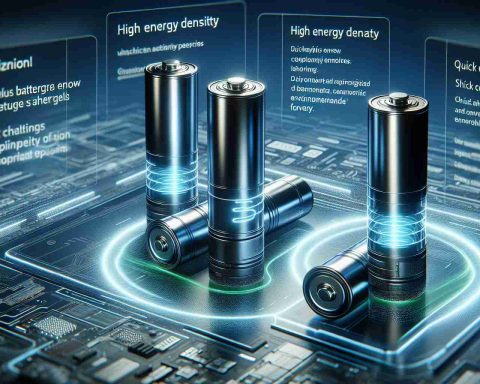- An industrial proposal in Halstead, Kansas sparks a heated debate over a battery energy storage system designed to power 200,000 homes.
- The project aims to prevent blackouts by easing strain on the local electrical grid during peak times.
- Residents express strong opposition due to concerns about potential pollution affecting farmland.
- Advocates highlight benefits and safety by referencing similar systems in places like Texas.
- The city is preparing zoning amendments to balance modern technology with Halstead’s rural character.
- The key question remains whether innovation and traditional values can coexist in this small town.
In the quiet town of Halstead, Kansas, a tempest churns. An industrial proposal has ignited a fervent debate, causing sparks to fly in this otherwise serene community. At the heart of the controversy is a battery energy storage system—technology that promises a modern energy solution but stirs deeply rooted concerns.
Picture a vast array of lithium-ion batteries, silently gathering electricity, standing ready to dispatch power to 200,000 homes. This visionary project aims to ease the strain on Halstead’s electrical grid during peak times, shielding residents from blackouts that could darken their lives without warning.
Yet, as the idea inches forward, the mood among locals is charged. At a tense community meeting, voices rose with passionate opposition. Residents fear the specter of pollution hovering over their cherished farmland like a lingering storm cloud. “We don’t want this,” echoed through the room, reflecting a sentiment that spreads like wildfire across Halstead.
Despite the clamor, advocates for the battery storage network insist the benefits are tangible, citing examples of similar systems safeguarding regions like Texas from summer outages. It’s not a battle without supporters; they counter the fears with assurances of safety and modern infrastructure.
The city gears up to adapt, readying zoning amendments and grappling with how to navigate the balance between embracing progressive technology and preserving the pastoral essence of Halstead. As plans unfold, the heartbeat of this small town seems to pulse with a singular question: Can innovation and tradition coexist harmoniously?
While the community faces a crossroads, the wider world watches, waiting to see if a path can be forged where farms and future peacefully intertwine.
The Hidden Truth About Battery Energy Storage: What Halstead’s Debate Means for You
Understanding Battery Energy Storage Systems
Features, Specs & Pricing
Battery Energy Storage Systems (BESS) like the one proposed in Halstead typically use lithium-ion batteries due to their efficiency, lifespan, and scalability. Key features often include:
– Capacity and Output: Systems are assessed by their capacity (usually in megawatt-hours, MWh) and output power (in megawatts, MW).
– Lifespan: Typically ranges from 10 to 15 years with regular maintenance.
– Cost: Prices can vary, but a large-scale BESS might cost anywhere from $500 to $700 per kWh. This can translate to several million dollars for systems meant to power thousands of homes.
Pros & Cons Overview
Pros:
– Grid Reliability: Can stabilize the electrical grid by storing excess power and releasing it during peak demand times.
– Renewable Integration: Enhances the usability of solar and wind energy by storing excess energy for later use.
Cons:
– Environmental Concerns: Risk of pollution during production and disposal of lithium-ion batteries.
– High Initial Costs: While operational costs are low, the initial investment can be significant.
Real-World Use Cases & Industry Trends
Battery storage systems are increasingly used across the globe to enhance grid stability and integrate renewable energy sources. Some notable implementations include:
– California, USA: Wide adoption to supplement renewable energy plants and reduce reliance on fossil fuels.
– Australia: Large-scale battery projects aid in managing the country’s considerable renewable energy resources.
Market Forecasts & Industry Trends
According to BloombergNEF, the global battery energy storage market is expected to reach 1,095 gigawatt-hours by 2030. This growth is driven by both the decreasing cost of battery technology and increased needs for renewable energy integration.
Controversies & Limitations
The proposal in Halstead underscores common controversies associated with BESS:
– Environmental Impact: Extraction and processing of lithium can have significant ecological effects.
– Safety Concerns: Risks of fire and chemical leaks if systems are improperly maintained or if defects occur.
Security & Sustainability
Modern BESS require stringent safety protocols to be adhered to, including regular inspections and fire prevention measures. Enhancing sustainability involves recycling programs to handle old batteries responsibly.
Tutorials & Compatibility
How-To Steps & Life Hacks
For communities considering BESS:
1. Community Engagement: Regular meetings and transparent communications can mitigate resistance.
2. Safety Assurance: Collaborate with experts to educate the public about safety measures.
3. Assess Compatibility: Evaluate existing infrastructure to ensure it can support the new technology.
Insights & Predictions
As BESS technology matures, we can expect:
1. Improved Efficiency: Innovations leading to better battery life and charging rates.
2. Reduced Costs: Technological advancements will likely continue to drive down costs.
Actionable Recommendations
– For communities like Halstead, proactive community engagement is crucial.
– Consider partnering with universities or tech companies to explore more environmentally friendly alternatives to lithium-ion batteries.
– Invest in public education campaigns to dispel myths and provide factual information about battery storage systems.
To learn more about battery energy storage and renewable energy solutions, visit Energy.gov.
This holistic exploration can inform readers on how to better engage in discussions and decision-making processes regarding battery energy storage systems in their own communities.















